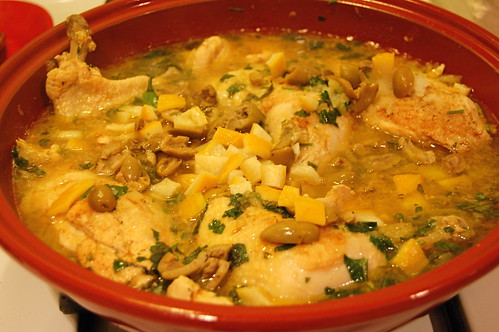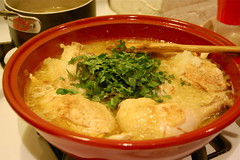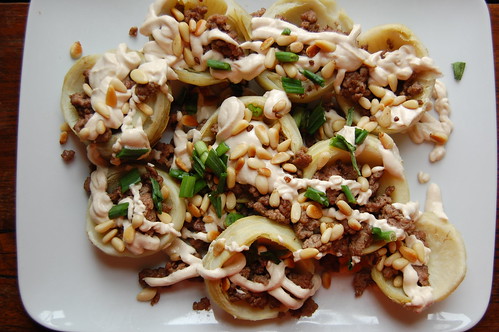
This is my quick and dirty version of a more classic stuffed artichoke dish. The traditional version takes artichoke bottoms and stuffs them with a rice, meat, and herb stuffing. The artichokes would then be layered in a dish, topped with broth or a bechamel type sauce and baked.
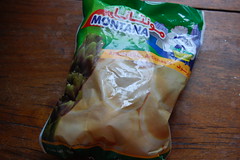

Pre-prepared artichoke bottoms are very common in the Middle East and readily available frozen in a Middle Eastern grocery. They are, in my opinion, the best way to enjoy artichokes, much meatier and richer than those stringy artichoke hearts. My simple version just involves sauteeing a bit of ground meat or lamb and tossing it on top of the artichokes with a tahini sauce and toasted pine nuts and herbs. You can eat it with a knife and fork, or if the artichokes are small enough, you can eat them with your hands. This dish makes for a great quick lunch, along with some good pita bread, or you could serve it as part of a larger mezze meal.
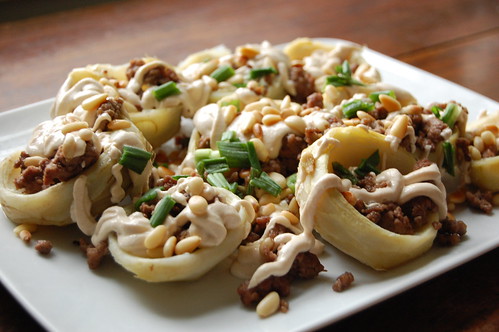
Artichokes with Meat and Tahini Sauce
8-10 prepared artichoke bottoms, frozen or fresh
1/2 lb ground lamb or beef
salt and fresh black pepper to taste
1/4 teaspoon each cumin, allspice
1/4 cup tahini
2 lemons
2 tablespoons thick yogurt (labne)
1/4 cup pine nuts, toasted
scallions or chives, diced
1. Place tahini in a bowl and add in a pinch of salt and the juice of 1 lemon. Stir to combine, the mixture will become very thick. Gradually add water to the tahini, stirring, until it is a thick but pourable consistency. Add in the yogurt. Taste to see if it needs more salt r lemon.
2. Bring a pot of water to boil with the juice of 1 lemon. Boil the artichokes until tender (just a few minutes for frozen, 15-20 minutes for fresh).
3. Meanwhile. Saute the ground meat in the pan with salt, pepper, cumin, and allspice until nicely browned.
4. Arrange the artichokes on a platter. Sprinkle the meat over top, trying to get the meat in the artichoke cups. Drizzle the tahini sauce over. Sprinkle the toasted pine nuts and scallions over top. Serve while still warm.

